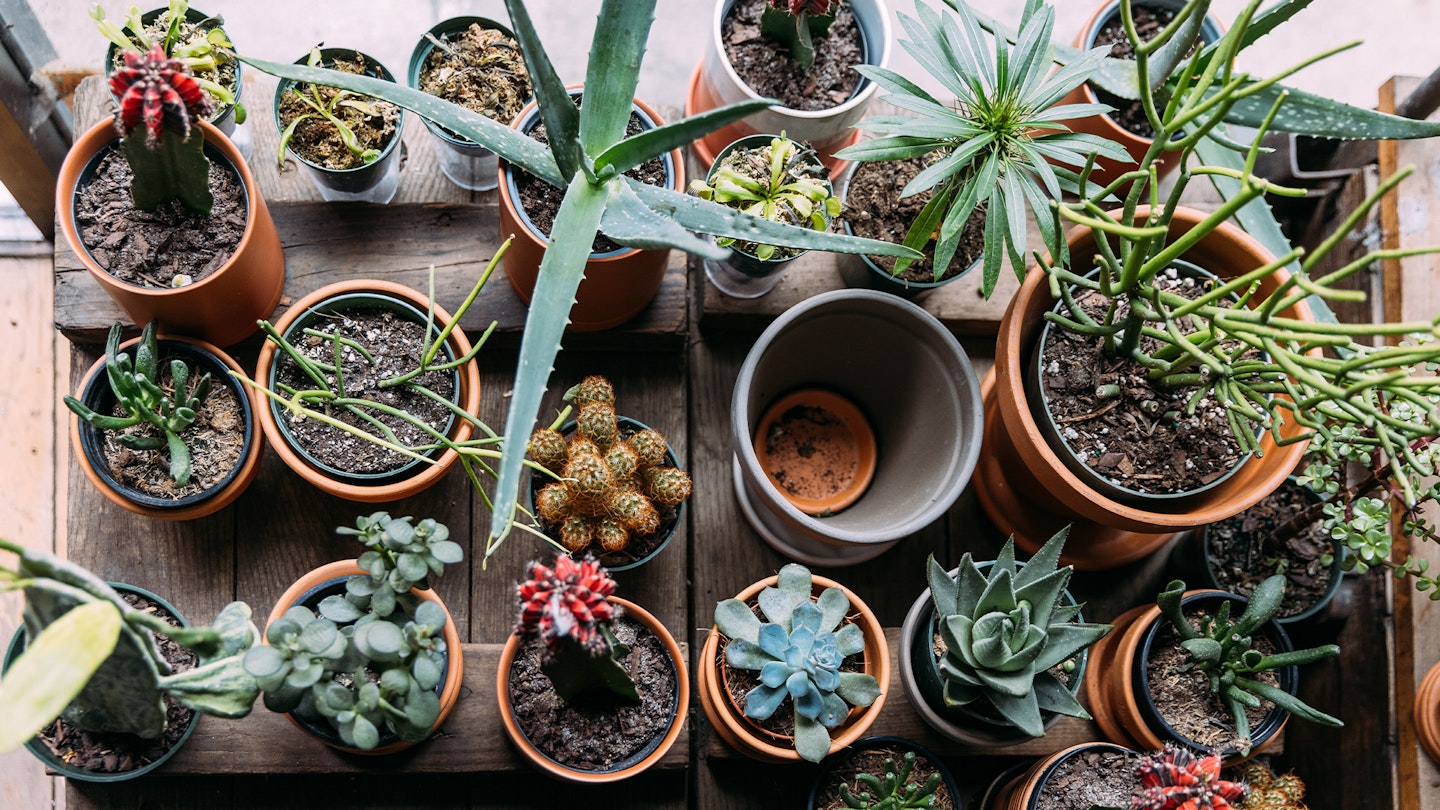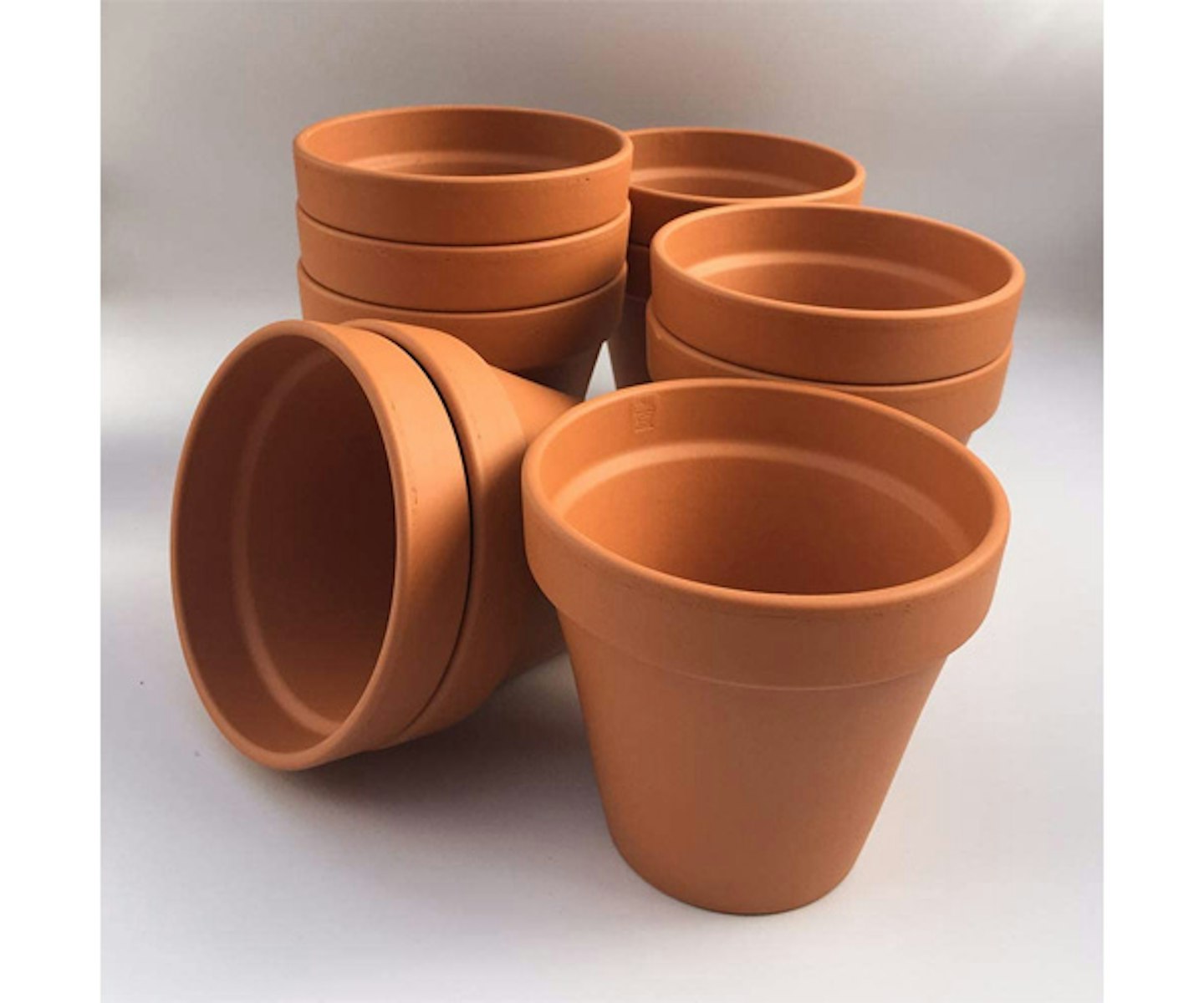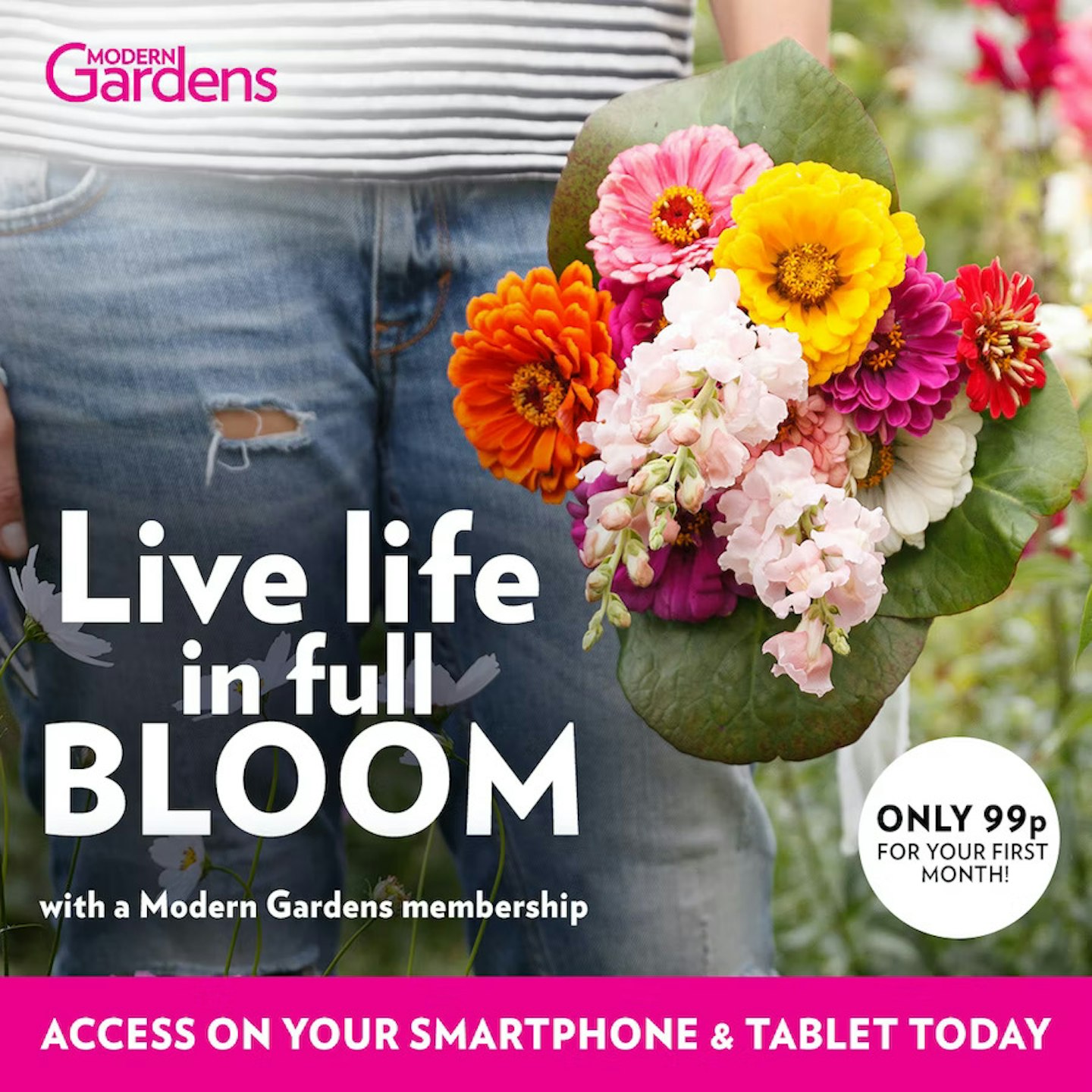Spruce up your outdoor space in seconds with contemporary and practical plant pots. If you are looking for the best outdoor small plant pots for your outdoor space, we have rounded up our top picks in a range of colours, materials and price points, so you can showcase all your plants in your garden or on your patio or interiors. So whether you are looking for a small plant pot for your garden, conservatory or kitchen - we have rounded up the best outdoor small plant pots for shrubs and flowers to add some practical personality to your space.
You may have seen the terms 'pots' and 'planters' used interchangeably when researching growing containers. Although they are very similar in function, there are a few differences between the two. A pot tends to be round and often made from an earthenware material or plastic. A planter is typically rectangular, made from any of a variety of different materials, and tends to have holes for drainage.
Best outdoor small plant pots at a glance
• Best for sustainability: Elho Fuente Rings Round - View now on Amazon UK
• Best Overall: Terracotta rimmed pot small - View now on Crocus
• Best affordable: Clever Pots Easy Release Pots Small - View now on Amazon UK
In this guide, we dive into everything you need to know about plant pots and where you can buy our favourite small pots for yourself. if you're looking for something larger, check out the best large outdoor plant pots.
Best small plant pots
Best small plant pot for sustainability
Moulded from waste plastic, these sleek, seamless planters are lightweight yet robust and an excellent choice for a modern garden as they're easy to move around. Although slightly more expensive than pots made from virgin plastic, they are the perfect example of affordability meets sustainability. Naturally watertight, this material can stay outside year-round without cracking or fading.
Customer review: "Beautiful pot, lightweight but sturdy, great value for money."
Pros
- Three colours available
- Made from recycled plastic
- Built for extensive and long-term use
Cons
- Black in particular sells out
| Material: | Recycled plastic |
| Size: | <meta charset="utf-8">29.5 x 29.5 x 18.4 cm |
Best earthenware
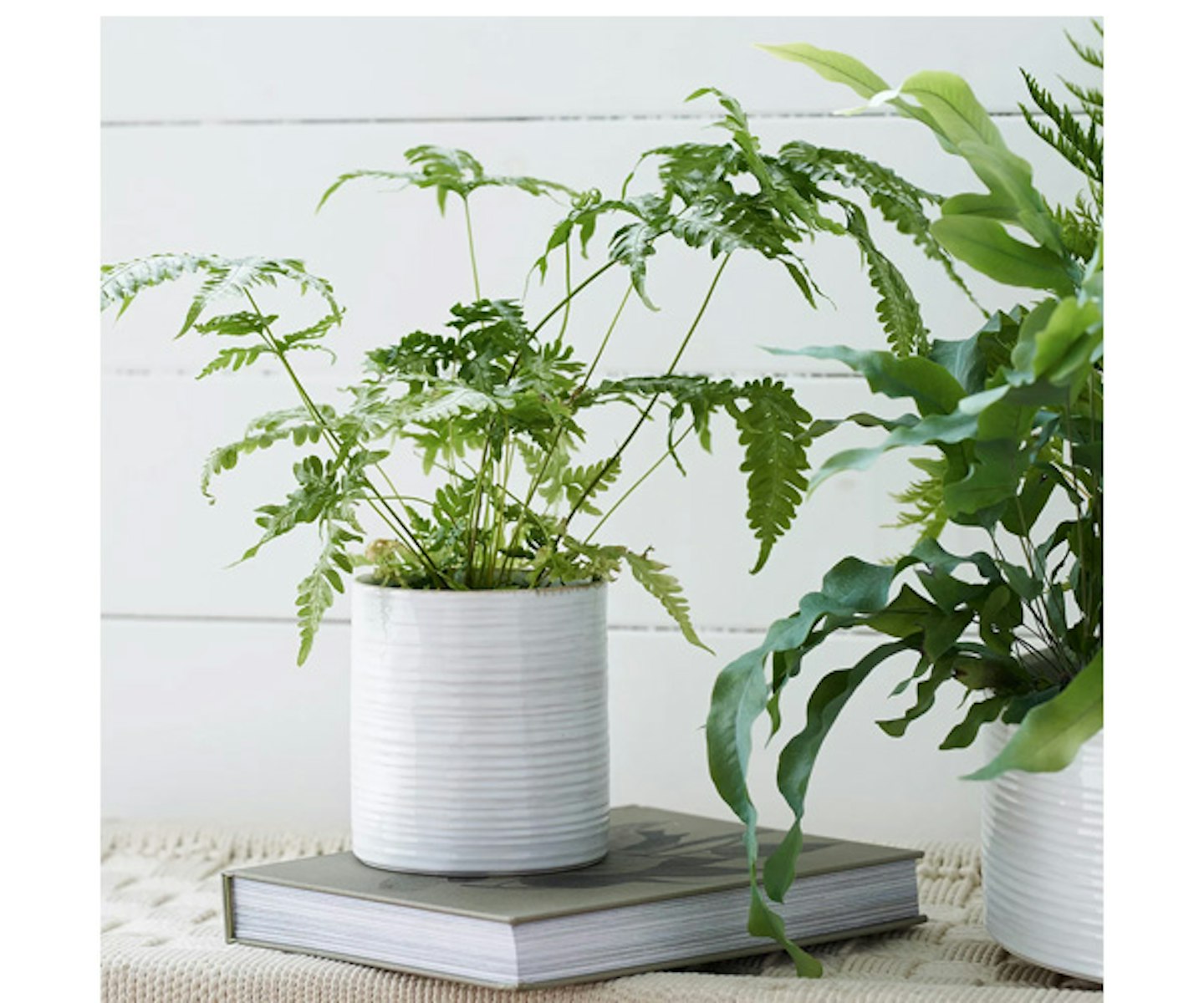
www.thewhitecompany.com
Designed in Portugal, this handmade plant pot is crafted from high-quality earthenware. The plant pot has a lovely and rustic look and is best displayed indoors. Plant some herbs, shrubs, bulbs or plants in your conservatory, kitchen or patio for some added greenery.
Customer review: "Love this stylish planter to keep my fresh herbs on the kitchen window sill - just the right size!"
Pros
- Available in large and small sizes
- High quality
Cons
- Keep an eye on it in harsh outdoor environments
| Material: | Earthenware |
| Size: | <meta charset="utf-8">H13.3cm x W13.1cm x L13.1cm |
Best waterproof small plant pot
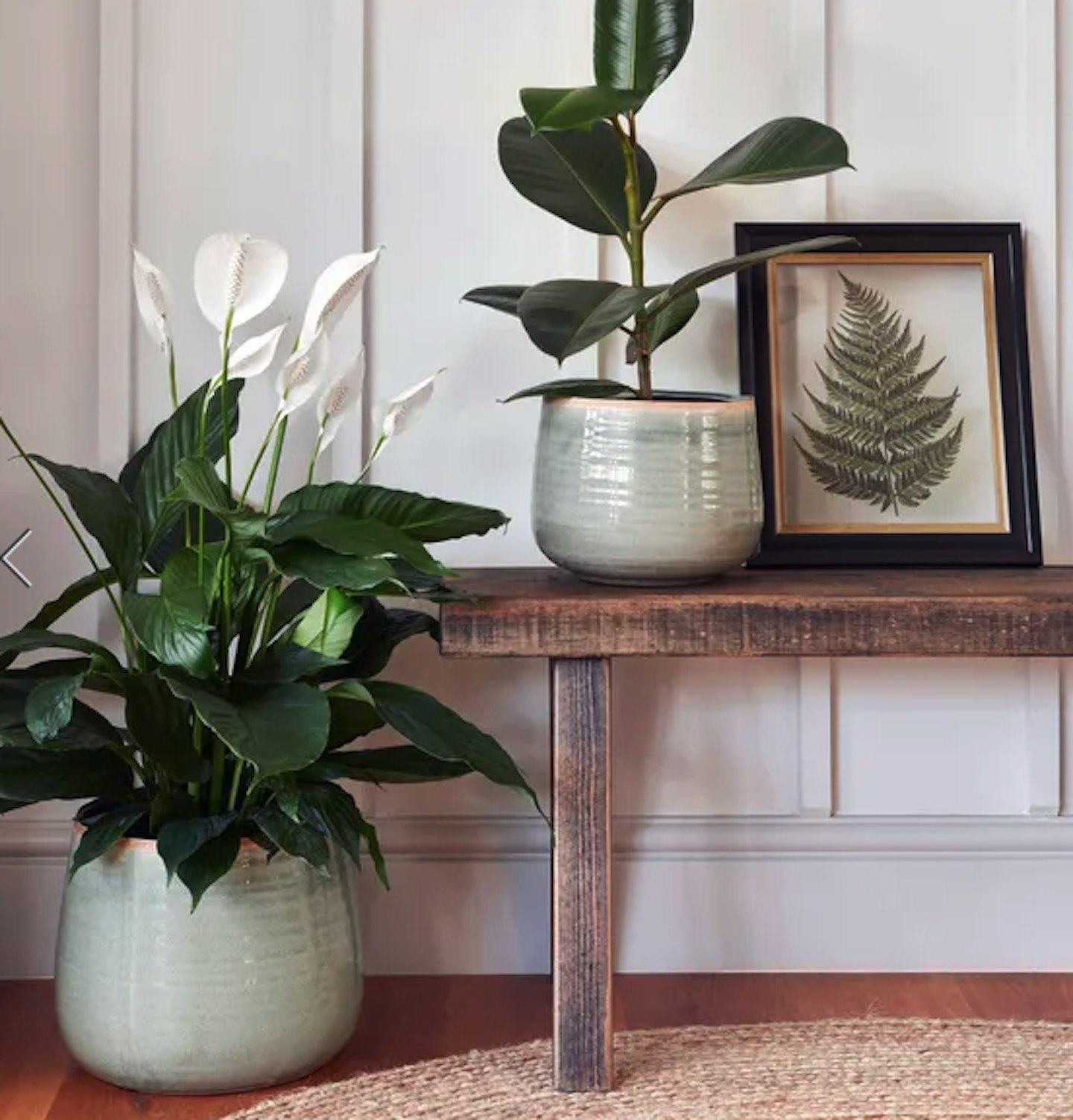
www.dunelm.com
If you are looking for a gorgeous handcrafted item, this Como plant pot from Dunelm is a great choice. One thing to note is that you should expect slight variations in the appearance of each unique piece.
Pros
- Reactive glaze
- Waterproof
- Premium quality
Cons
- No reviews as of yet
| Material: | Ceramic |
| Size: | W 26cm x H 21cm x D 26cm |
Best rust-resistant
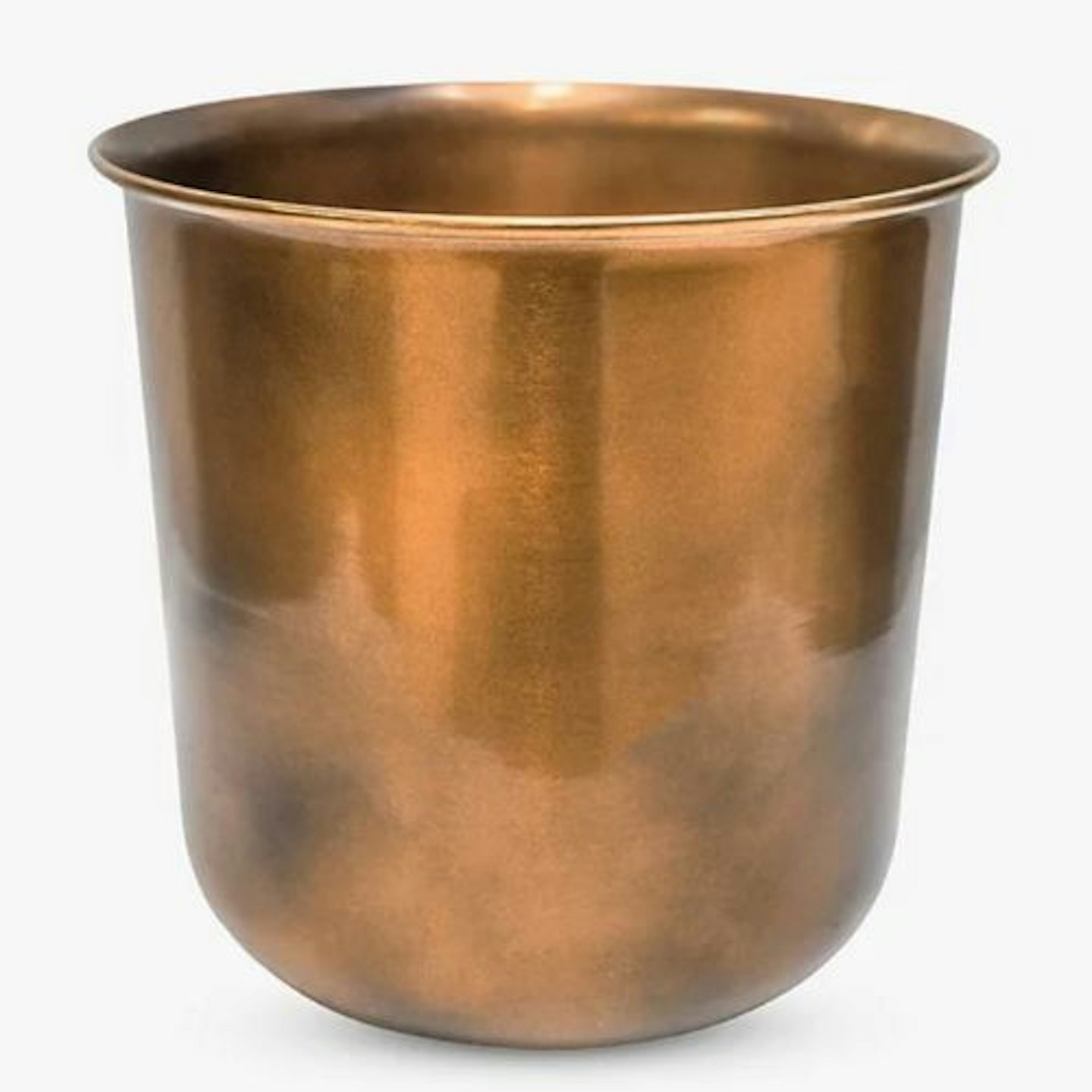
www.johnlewis.com
This curved Hampton Metal Outdoor Planter has a luxurious feel and it's sunlight, frost and rust-resistant - perfect for outdoor use. Thanks to its size, you can move it around your garden for years to come.
Customer review: "Really nice design and glaze. Would like more colours and sizes."
Pros
- Frost and rust-resistant
- Suitable for outdoor and indoor use
Cons
- No reviews as of yet
| Material: | Copper |
| Size: | H28 x Dia.27.5cm |
Best affordable
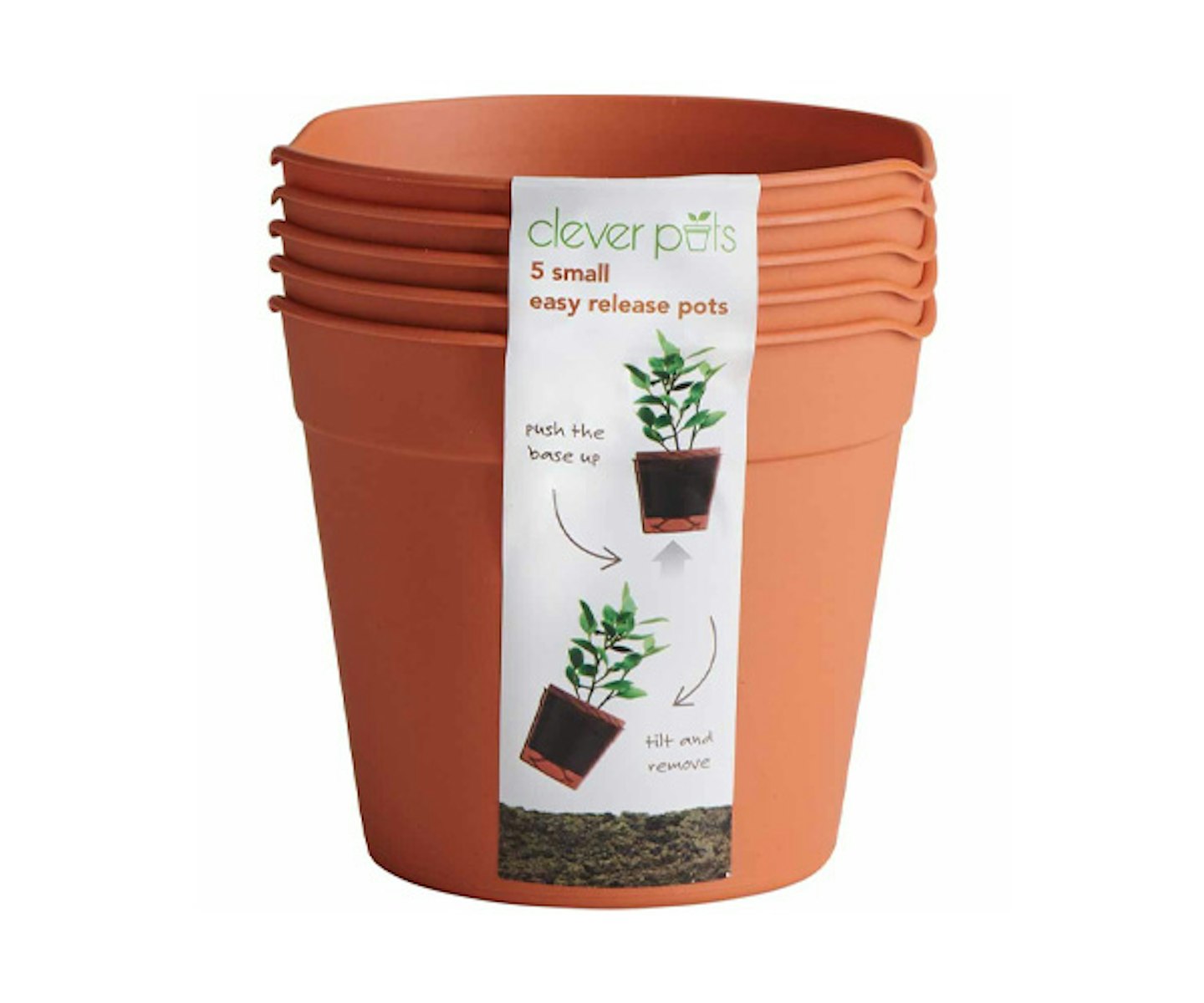
Cheap and cheerful, this five-piece set is super durable and designed to be reused over the seasons. Created with a textured surface to enable pot labelling with pencil, so you know what is growing inside. Crafted and finished in a classic terracotta colourway, these 'push the base up' easy-release pots are an excellent pick for any green thumb.
Customer review: "Perfect for my hydrangea cuttings , super fast delivery. Excellent the way the base of the pot folds in to allow easy plant removal."
Pros
- Great value
- Lots of sizes available
Cons
- Not as aesthetically pleasing as other listed
| Material: | Plastic |
| Size: | N/A |
Best terracotta
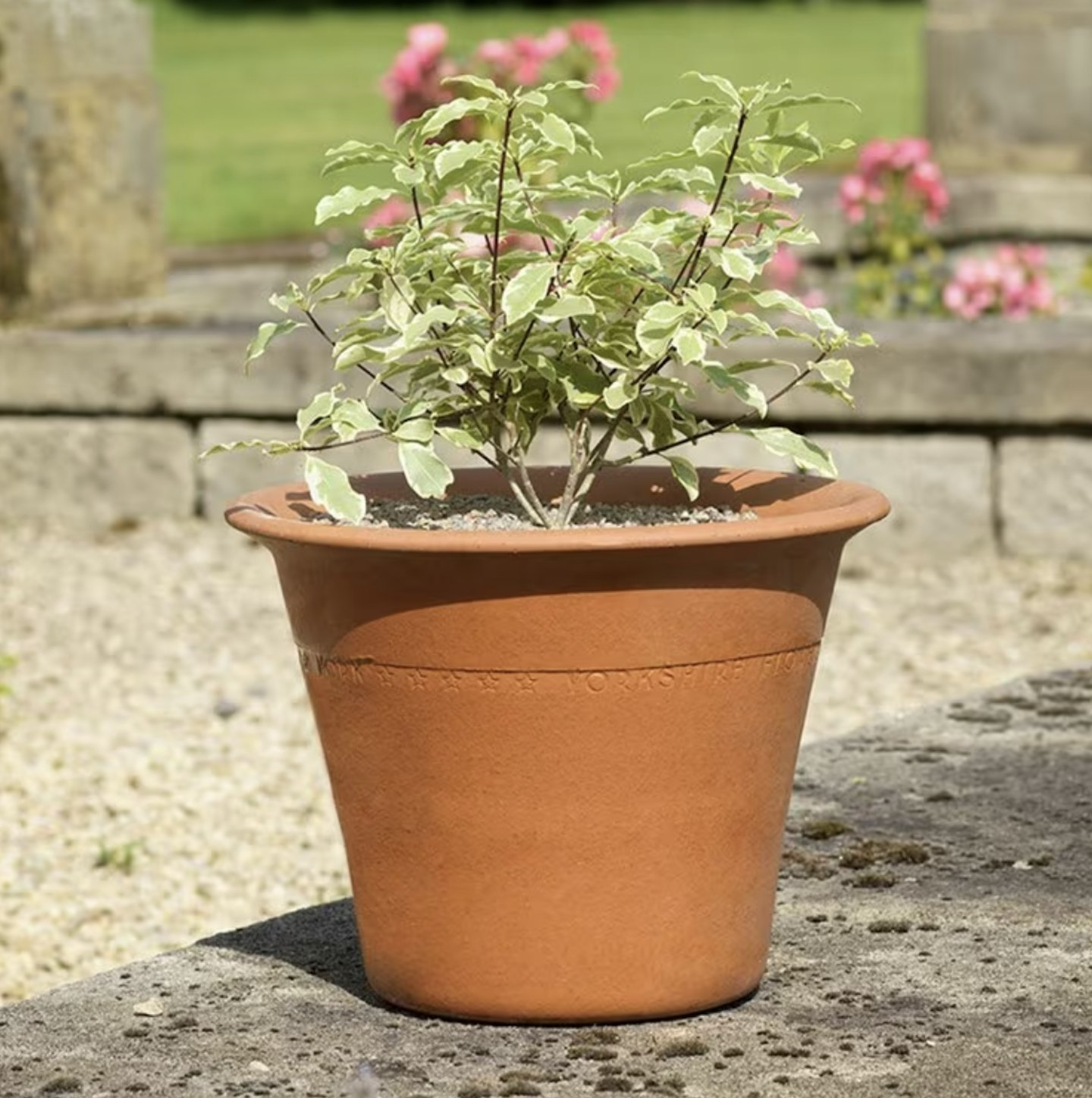
www.crocus.co.uk
Rustic and timeless - this chunky terracotta pot with curved sides and a rolled rim making it a versatile classic that will work well in any garden style. Made in Yorkshire from 100% locally sourced clay and etched with Yorkshire Flowerpots branding to highlight their provenance. Supplied with a drainage hole.
Cons
- No reviews as yet
Best wide
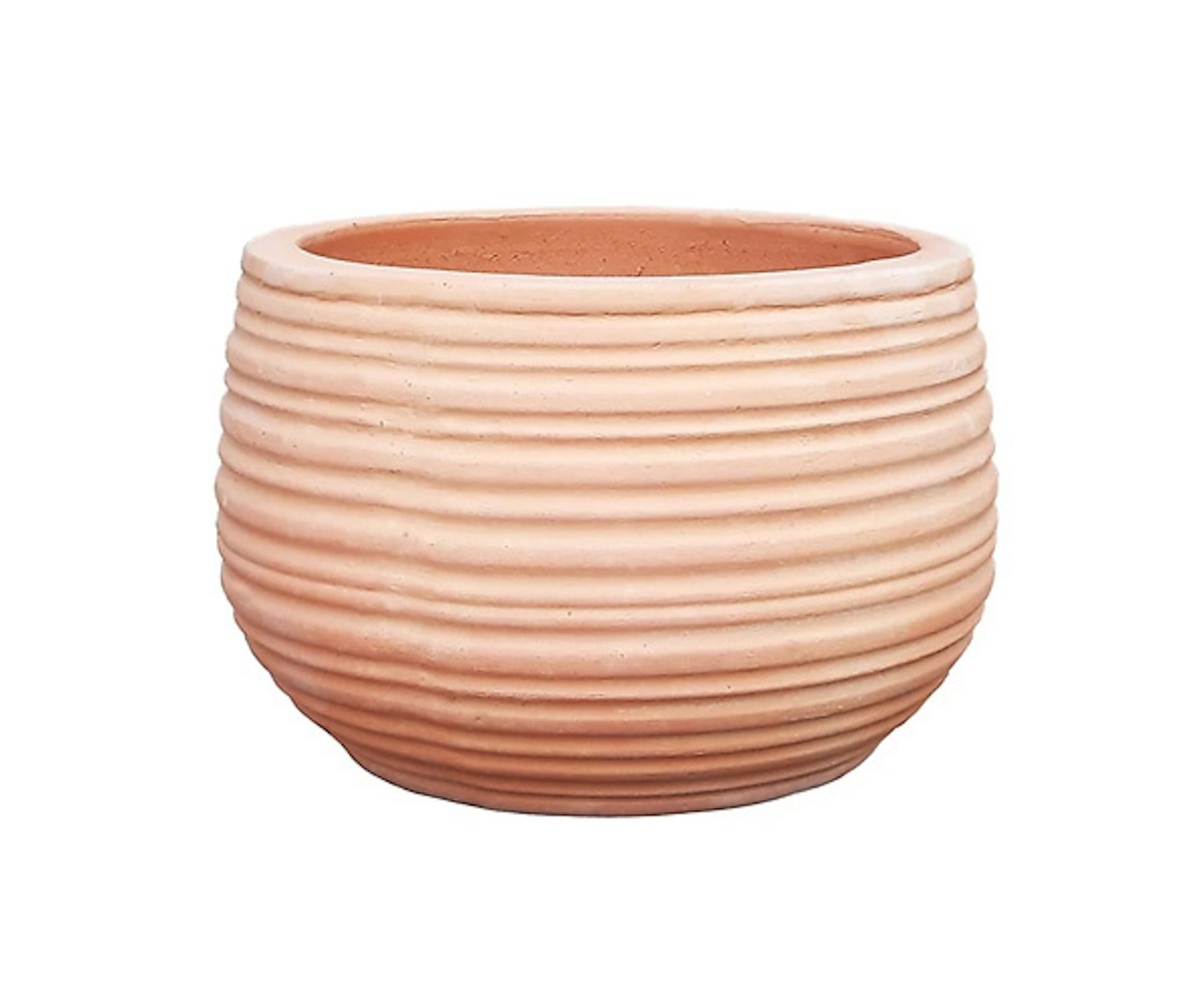
www.diy.com
This fun honeycomb-style terracotta plant pot is wide yet small and makes a great complement to your outdoor space. The pot contains drainage holes that allow excess water to drain away after watering and heavy rain, keeping in the right moisture level.
Pros
- Contemporary design
- Drainage holes help the plant not be waterlogged
Cons
- Quite wide
| Material: | Terracotta |
| Size: | 36cm diameter |
Best set
This value pack contains ten plant pots with a drainage hole in the base. These small-size pots are excellent if you are looking for a larger pack and are made from traditional terracotta. They look great as well as allow the roots to breathe, not to mention they are reasonably priced too.
Customer review: "Consciously spent a little more on these in order to avoid more plastic in the world. The pots themselves appear to be very good quality. Will buy again."
Pros
- Excellent value
Cons
- Basic value
| Material: | Terracotta |
| Size: | H11.7 x D13.2 m |
Best metal
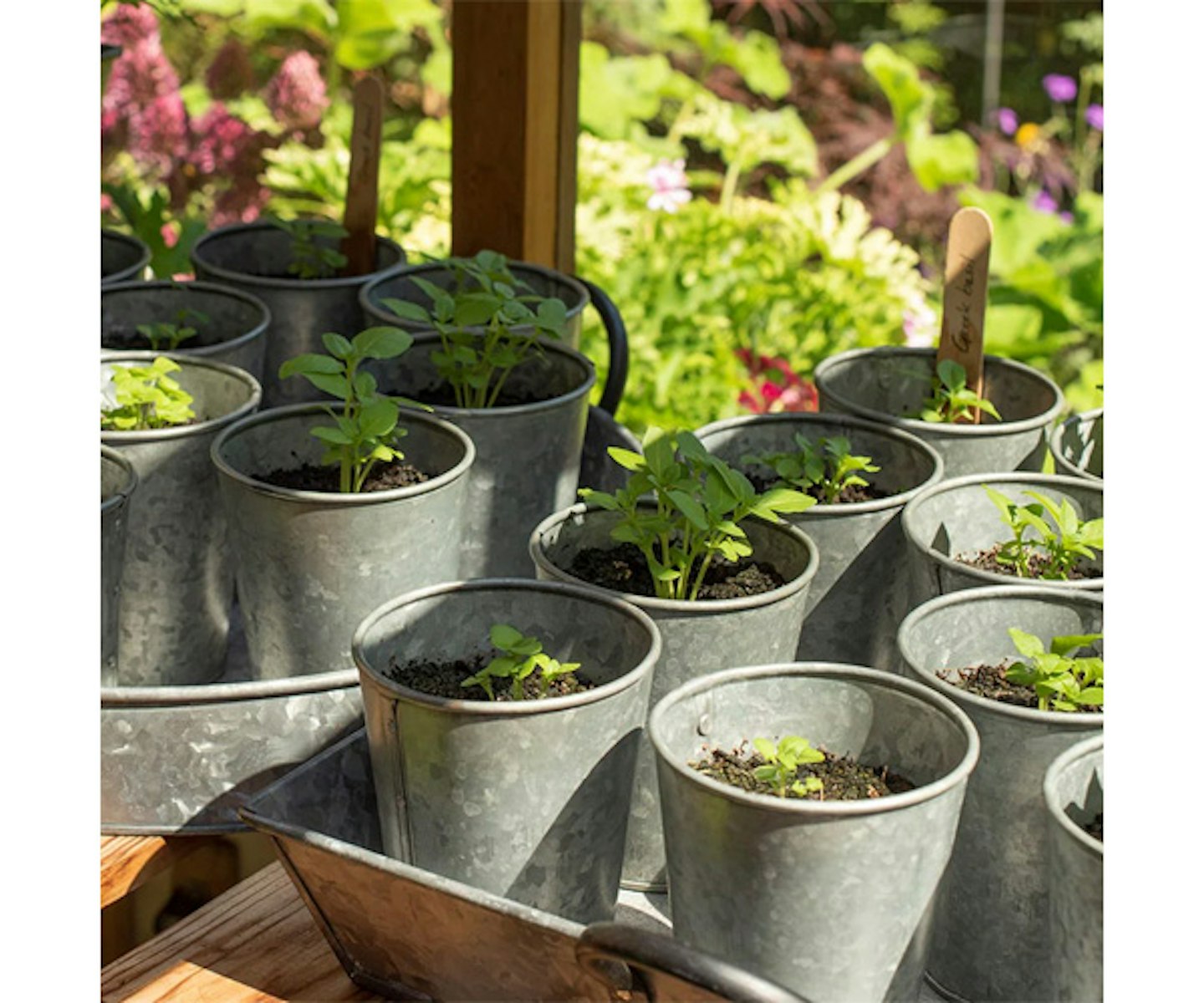
www.waitrosegarden.com
Functional, traditional and made from a heavier gauge galvanised steel, these sturdy pots make a valuable addition to your garden. Simple yet rustic, these pots are perfect for showcasing the natural beauty of your flowers, herbs and plants of choice.
Customer review: "Great looking contemporary plant holder, would recommend."
Pros
- High-quality
- Multipack is great value
Cons
- Dimensions may vary a little bit
| Material: | Steel |
| Size: | <meta charset="utf-8">9.5cm x 11cm |
What to consider when buying small plant pots
Shape and size: Pots are small and round and can accommodate only one plant, whereas planters are irregular in shape and can house more than one plant. When it comes to the size, it should match the size of the plant, including its growth rate.
Drainage: If your pot doesn’t have any, you’ll need to make drainage holes, or the plant will become waterlogged in winter rains. The drainage holes are the best feature to use to differentiate pots from planters, although garden supply companies often add a hole or plug to the bottom of pots to make them more versatile. A pot is not necessarily designed to hold a growing plant, hence the lack of holes, though it is common for gardeners to place a planter inside a pot.
Material: The choice of material affects not only the look but also how you care for the container and the plants. Pots are available in many materials, including ceramic, plastic, clay and terracotta. However, you can find other materials like glass, wood, crystal, and fibreglass can also add a creative look to your pot and plant.
However, ceramic and terracotta are more suitable for placing plants since they are porous, not to mention they are also more environmentally friendly than plastic pots.
Plant pot materials to consider
Modern Gardens Magazine writer Geoff Hodge breaks down the different types of plant pot materials and their properties to ensure you can choose the right plant pot for your needs.
Plastic
This is the most versatile material in terms of size, shape, design and colours available. There are now some really good-looking plastic pots with a high-quality look and finish.
Plastic containers are the lightest available, so they are easy to move around and a good choice wherever weight is a consideration. They hold moisture well and don’t dry out quickly. Cheaper plastic pots only tend to last for a few years, as sunlight and cold temperatures gradually degrade them, and they become brittle and fragile. Look for thicker, better-quality ones for durability. Thin plastics provide very little cold, frost and heat insulation. Light-coloured plastics heat up and cool down more slowly, so plant roots aren’t damaged as easily, even in sunny spots.
Black and dark plastics heat up very quickly, so avoid using them in full sun. Plastics are also mixed with other materials to increase and improve ranges even further. And many are designed and shaped to mimic other materials. Good quality ‘faux’ containers are often mistaken for the real thing.
Fibreglass
Versatile fibreglass can be used to make a huge variety of shapes and colours, as well as give a textured or glossy finish. Pots are lightweight and easy to move and can mimic the natural look of wood, stone, metal and rock. They’re also weather-resistant, frostproof and won’t succumb to UV damage. Fibreglass mixed with clay (Fibreclay) gives a robust and natural-looking finish.
Terracotta and clay
Pots in these visually appealing materials come in a wide variety of shapes and sizes. Cheap, thin terracotta containers tend to chip and crack easily and are susceptible to cold and frost damage. Some suppliers of quality terracotta containers offer ‘frost-proof’ guarantees. Clay pots are porous, drawing moisture from the compost, so it dries out more quickly. Glazed ceramic and terracotta containers suffer less evaporation, so your compost won’t dry out as fast. They’re good at retaining heat, which is helpful in winter, but the compost can get very hot in a summer suntrap.
Metal
Containers made from metals are usually chic and decorative. They are durable – they won’t chip, crack or break – but provide little insulation, heating up quickly and providing little cold protection. Most age gracefully and beautifully, producing an aged patina or attractive colouring, although, depending on the type of metal, some will rust in time.
Best outdoor small plant pot FAQs
When do you need to repot plants?
Repotting plants gives a growing plant's roots more room because as they get older and bigger, the roots will grow so they can suck up enough water and nutrients to feed themselves. Some also choose to repot plants in a stylish new pot with fresh new compost to give them some more nutrients from the compost.
Here are some signs to look out for when a plant needs repotting:
• Roots emerging from the bottom of the pot
• Soil looks very dry and dusty
• It has been years since you repotted the plant
• The plant has clearly grown a lot over time
• The plant looks unstable (breaking away)
Experts advise repotting during the spring and summer when plants are at their strongest and in a period of growth.
Read our full guide on how to repot plants and when here.
Are smaller pots better for plants?
A smaller pot decreases the chances of root rot, protecting plants from over-watering. Underwatering and less substrate is much safer. If you were to water again too soon or keep the substrate too moist or use a substrate that carries too much water, that is where a smaller pot would be good.
Why you shouldn't put small plants in big pots?
If you use a pot that is too large the the soil dries slowly, making your plant more susceptible to root rot. Therefore when a plant is too large for its pot, it could also tip over. On the other hand a too-small pot, soil dries so quickly that you will have to water it very frequently.
Does repotting plants help them grow?
Hopefully, yes, but don't be disheartened if they do not grow as simply refreshing the soil and giving extra space will keep some plants healthy and strong however repotting a plant into a larger vessel will continue its growth and will give it all it needs to thrive.
What to read next
Discover everything you need to know to make your outside space look fantastic, quickly and easily, with hundreds of simple ideas, designer tricks, affordable products and expert advice with a Modern Gardens Membership. Find out more about the benefits of being a Member now.
Ellen Kinsey is a Senior Health & Wellness Product Writer for Modern Gardens, specialising in sustainable living and health. She lives and breathes all things natural health, cooking and nature.
